Recipe for making Napoleon cake with custard. Cooking without any unnecessary troubles: simple and delicious!
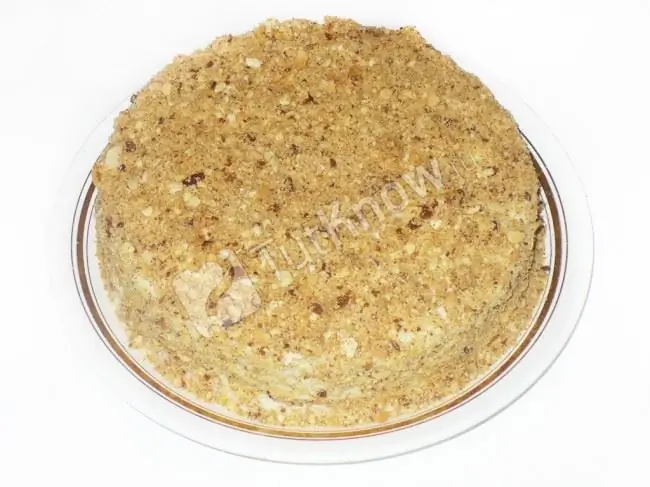
Who Loves Napoleon Cake? Probably many will say that this is my favorite cake! Yes, making a cake at home with your own hands takes time and effort, but they pay off with their unique taste of the cake and the thirst to eat it again and again.
Today there are a large number of recipes for "Napoleon". Vodka, cognac, wine, vinegar or lemon juice are also added; knead the dough with the addition of butter or margarine; make cream from milk or sour cream and so on. But I try to make a cake with butter, not unhealthy margarine. And the cream is only custard from milk, it tastes better and soaks the cakes better.
- Caloric content per 100 g - 440 kcal.
- Servings - 1 cake
- Cooking time - 4 hours
Ingredients:
- Butter (not less than 80%) - 400 g for cakes and 50 g for cream
- Flour - 750-800 g for cakes and 100 g for cream
- Water - 130 ml
- Eggs - 2 pcs. for cakes and 4 pcs. for cream
- Lemon juice - 2 tablespoons or vinegar - 1 tbsp.
- Salt - a pinch
- Milk - 1 liter for cream
- Sugar - 1.5-2 cups (300-400 g) for cream
- Vanilla sugar - 2 sachets (optional)
Making a Napoleon cake with custard:
Prepare the dough and bake the cakes:

1. In 130 ml of water add 2 tablespoons of freshly squeezed lemon juice or 1 tablespoon of vinegar (I made with lemon juice) and mix. Beat 2 eggs with a pinch of salt in a separate bowl with a fork. Combine water with eggs and stir.
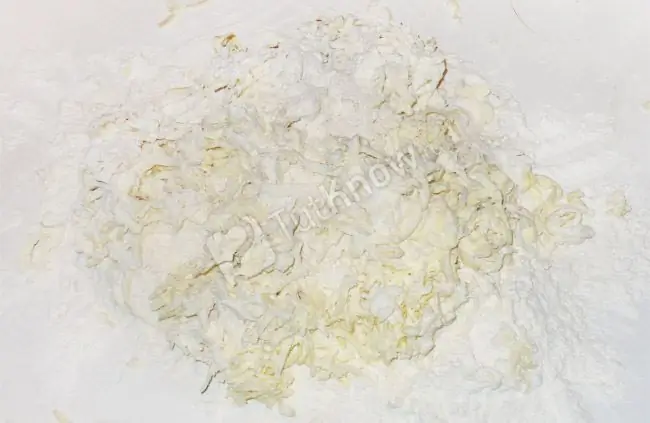
2. Pour 750 grams of flour on the table and put the pre-grated butter on top (you can cut it into cubes).

3. Chop butter and flour with a knife and then rub the dough with your hands until crumbs appear. Then make a hole in the center and pour in the prepared liquid: eggs with water.

4. Knead the dough and divide it into 12 equal pieces - balls. Put them on a plate, cover with cling film and refrigerate for 1-1.5 hours.

5. Roll out a ball of dough on the table (better on parchment paper, it will be easier to transfer it to a baking sheet, immediately attach a plate or mold 22-23 cm and cut it off. Chop the pancake with a fork or knife so that the cake does not swell, and put in a preheated oven to ~ 200 ° C and bake for 7-9 minutes (until an ash-colored color is formed).
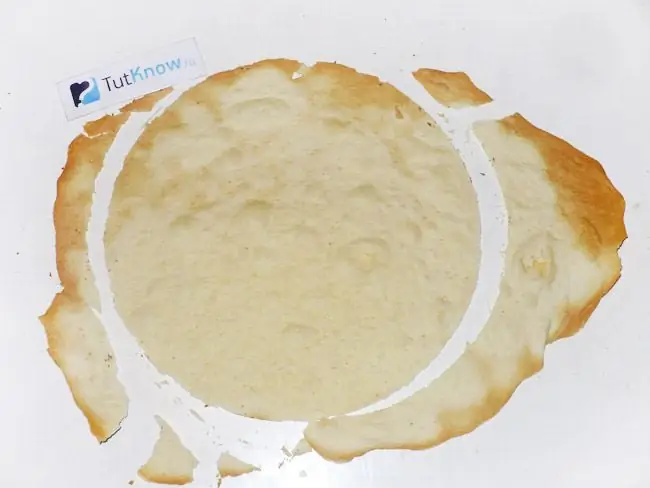
6. If you did not cut out the pancake in advance on parchment paper, then put the finished cake on the table, cover with a plate or lid and cut out a circle. We set aside the trimmings for crumbs.
Many people cut out the circle before baking it in the oven, but this way it shrinks a little and the cakes turn out to be uneven. And if the finished fried crust cracks when cutting, then this is not a problem. Try to do this as soon as you take it out of the oven.
If possible, try to use two baking sheets while the first is baking - roll out the second pancake. The process is long and tedious. Lay out the finished and cut cakes on a flat surface, preferably on a cutting board, so that they do not bend or break.
Cooking custard for "Napoleon":
The cream can be made up 20% more for the stock. To do this, you need milk - 1, 2 liters, sugar 400 g, flour 120 g, 4 eggs.
1. Put the milk on the fire and as soon as it starts to boil - set it aside, let it cool (it is VERY important NOT to boil it!). Stir four eggs with sugar and vanilla. Then add flour and mix well again. By the way, I decided to make this cream with less sugar - I put just one glass instead of the required one and a half or two. And it worked just fine. 3. Pour the semi-cooled milk into eggs with sugar, flour and stir. 4. Put the whole mass on a low heat and cook, stirring constantly until it thickens - the custard is ready. You cannot bring to a boil - otherwise the mass will curl up! 5. You can put 50 g of butter in the finished custard, but you should get it out of the refrigerator in advance. Stir the cream well again and grease the cakes with it.
Assembling the cake:
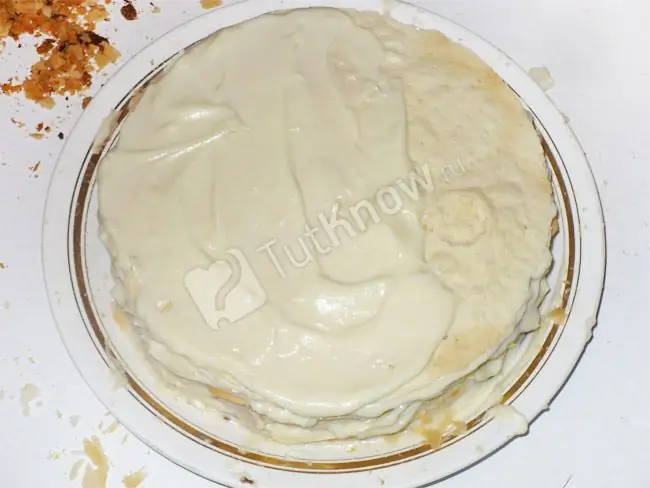
1. Put the cooled baked cake in a dish (dish) where you will form a cake and cover it with cream (preferably just cooked, warm). Then put the next cake and so on, grease all 12 cake layers with cream. You can only make 11 cakes, and turn the 12th with scraps into crumbs for sprinkling the cake.

Grease the folded cake also on top and on the sides with cream. I had so many extra large scraps that I could make two more layers of them. As a result, 14, not 12 pieces turned out
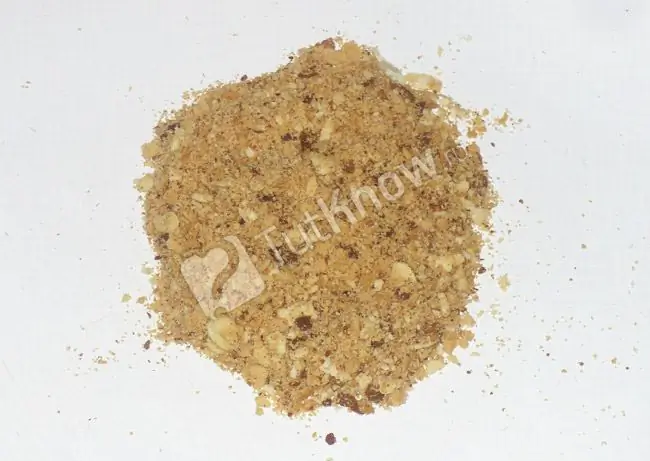
2. Now all our trimmings need to be chopped with a rolling pin or simply rubbed with your hands, which I always do.
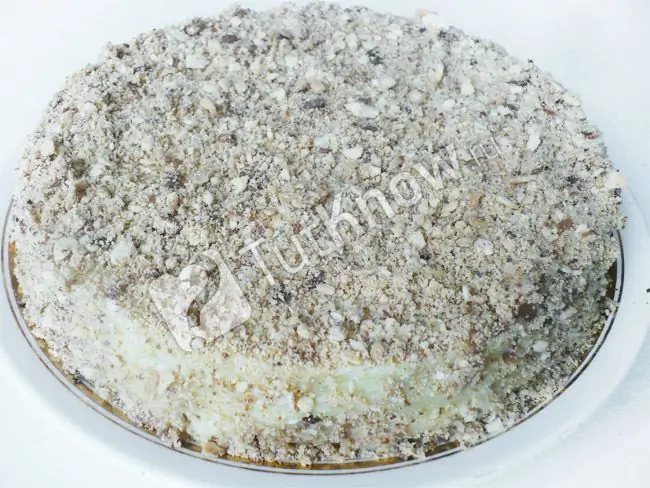
3. Sprinkle crumbs on the sides and top of the Napoleon. Then leave it to stand at room temperature for impregnation for 6-10 hours. There is no need to put the cake in the refrigerator, the cream will harden there and the cakes will not be soaked properly!
I usually cook Napoleon cake in the evening and leave it overnight, and the next day, for a holiday, it is ready for tea.
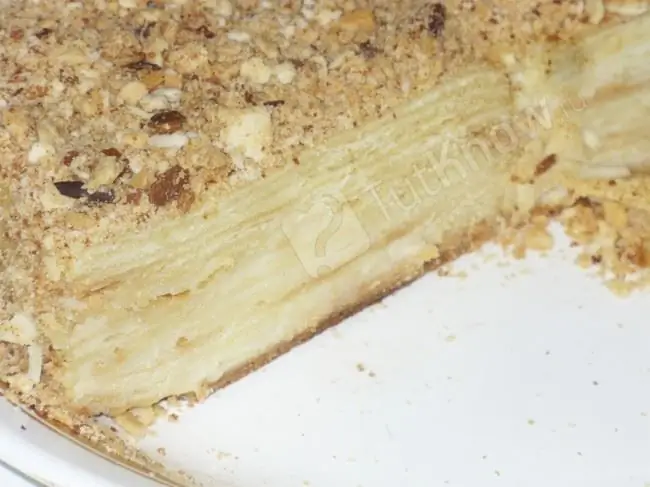
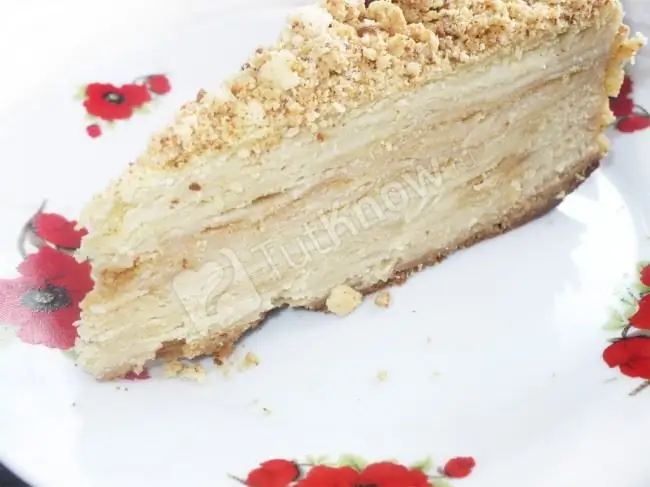
Enjoy your "Napoleonic" appetite!






